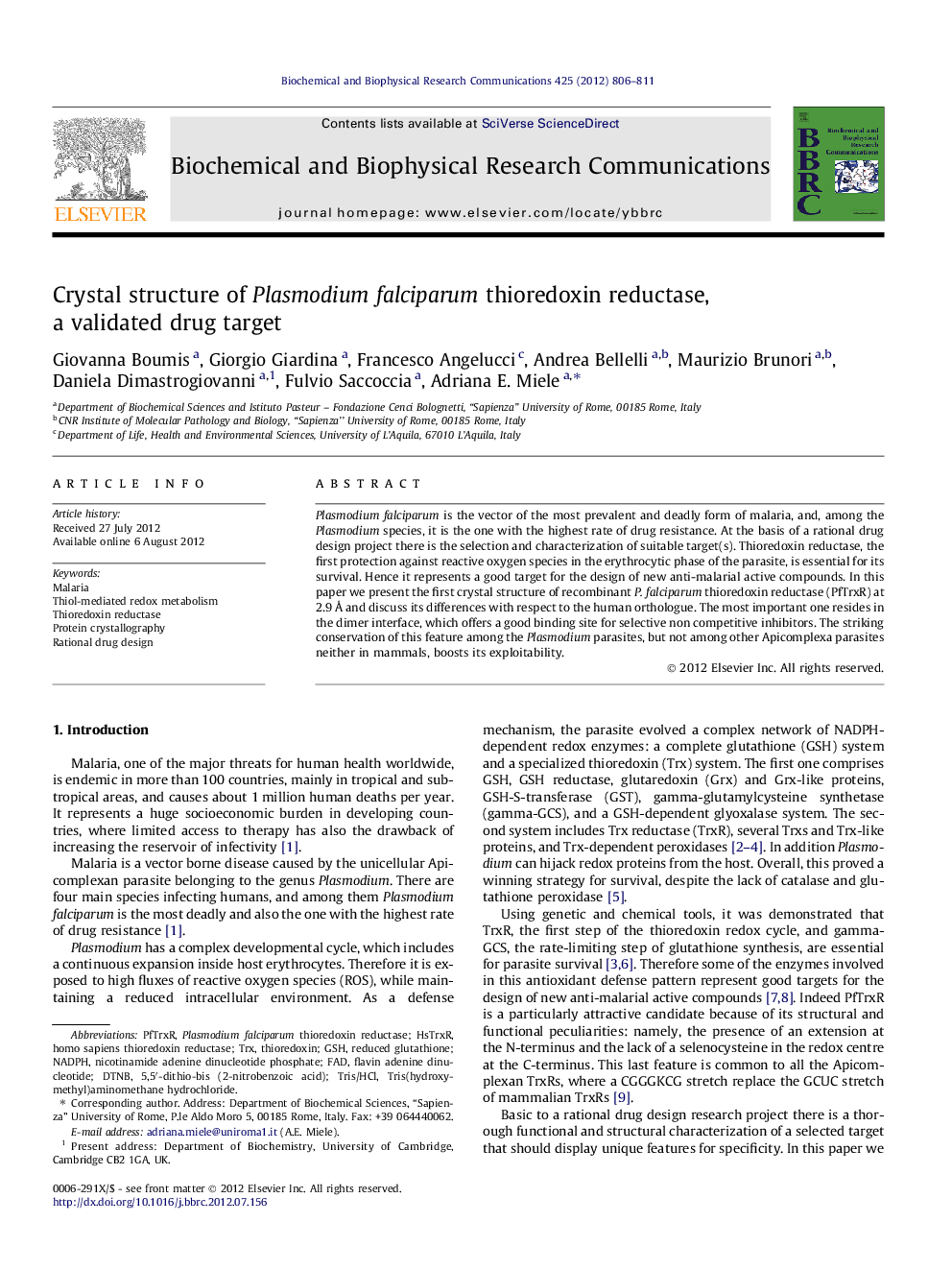| Article ID | Journal | Published Year | Pages | File Type |
|---|---|---|---|---|
| 1929611 | Biochemical and Biophysical Research Communications | 2012 | 6 Pages |
Plasmodium falciparum is the vector of the most prevalent and deadly form of malaria, and, among the Plasmodium species, it is the one with the highest rate of drug resistance. At the basis of a rational drug design project there is the selection and characterization of suitable target(s). Thioredoxin reductase, the first protection against reactive oxygen species in the erythrocytic phase of the parasite, is essential for its survival. Hence it represents a good target for the design of new anti-malarial active compounds. In this paper we present the first crystal structure of recombinant P. falciparum thioredoxin reductase (PfTrxR) at 2.9 Å and discuss its differences with respect to the human orthologue. The most important one resides in the dimer interface, which offers a good binding site for selective non competitive inhibitors. The striking conservation of this feature among the Plasmodium parasites, but not among other Apicomplexa parasites neither in mammals, boosts its exploitability.
Graphical abstractFigure optionsDownload full-size imageDownload as PowerPoint slideHighlights► The thioredoxin system is crucial to the viability of Plasmodium falciparum. ► The system is headed by NADPH-dependent thioredoxin reductase (PfTrxR). ► We present the first crystal structure of PfTrxR, a validated drug target. ► The interface and the central cavity are different from the human counterpart. ► These differences could be exploited for future rational inhibitors design.
